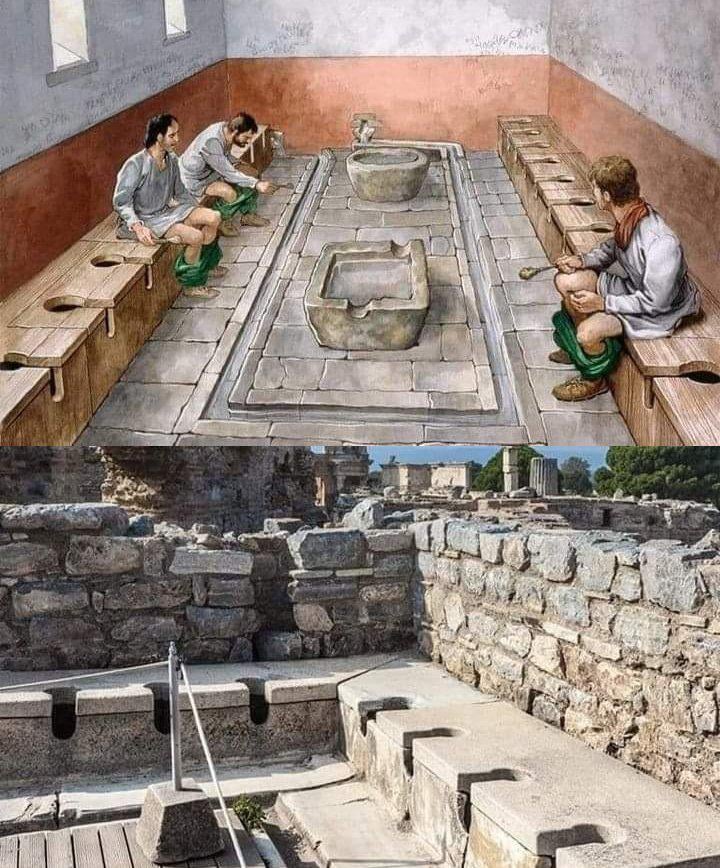
Then vs Now: Roman Public latrines in Ephesus; located to north-east of junction of Marble and Curetes Streets. It was constructed in 1st century AD over a channel with an uninterrupted flow of water and toilet seats, formed by cutting holes into marble benches that line walls. [720×868]
by Party_Judgment5780

1 Comment
There were three rows of toilets along three sides of latrine. Toilets were wholes cut in a marble bench, and their total number was 48. In centre, there was an uncovered pool that collected rainwater and provided refreshment in hot days of summer. Clients were protected from rain by a wooden roof supported by columns surrounding pool. Floor was covered with a mosaic. Public latrines were erected as a part of a larger building scheme of so-called Scholastica Baths that provided grey water for flushing toilets. In winter, latrines were kept warm by an underground heating system that funnelled steam from baths.
In ancient cities of Roman period, most of inhabitants did not have a luxury of a private bathroom or toilet. This privilege was limited to most prominent and wealthy citizens such as owners of splendid villas situated on slope of hill opposite to public latrines or bishop of Ephesus who had a grand residence built for him in vicinity of Church of Mary. However, vast majority of Ephesians had to use public toilets on a regular basis. Whole idea of using toilet in a company might be shocking to many modern visitors, but it was standard practice in cities of Roman Empire.
Probably nothing worked better to diminish perception of one’s status and importance that necessity to use public latrine in company of several dozens of other clients. Latrines were actually a meeting place, to chat and exchange gossip and news. Surprisingly for modern tastes, latrines were actually quite comfortable places, where people spent a lot of time, reading, thinking, or begging dinner invitations as in famous ditty by Martial: “Why does Vacerra spend his hours in all the privies, and day-long stoop? He wants a supper, not a poop.”
As there was no toilet paper available in Roman period, issue of getting clean after using restroom naturally arises. Clients used sponges attached to sticks that were stored in vinegar for hygienic purposes and washed in channel with running clean water after each use. Sounds disgusting, does it not? Let’s just add that to keep seats warm, public slaves were sitting there, waiting for customers. It is an excellent illustration of how different was idea of privacy and personal hygiene 2000 years ago.
Latrines of Ephesus were also studied by archaeologists and biologists who were interested in hygienic conditions and parasite infections in Roman period. They analysed mineralised faecal material from a private house latrine, sewer drain of a public communal latrine, and sediment from harbour canal. Results demonstrated that inhabitants of ancient Ephesus suffered from parasites as eggs of roundworm were found in public latrine, whipworm in the house latrine, and both whipworm and roundworm in harbour canal. Surprisingly, taking into account unique position of Ephesus as capital of Asia Province and huge trading harbour, there was a lack of diversity in parasite species found. It is essential to mention that these parasites spread by contamination of food and drink by human faeces. It seems that Ephesians did not always wash their hands before cooking and eating.